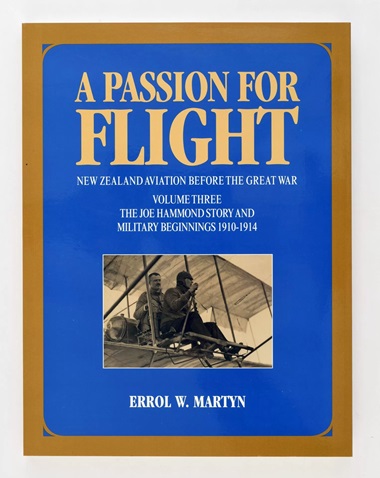 No sooner had volume two of this detailed history of early New Zealand history hit the decks after being published in July, 2013, but volume three (A Passion for Flight: New Zealand aviation before the Great War Volume Three: The Joe Hammond Story and Military beginnings 1910-1914)
No sooner had volume two of this detailed history of early New Zealand history hit the decks after being published in July, 2013, but volume three (A Passion for Flight: New Zealand aviation before the Great War Volume Three: The Joe Hammond Story and Military beginnings 1910-1914)
followed, distinguishing Martyn as a true scholar uninterested in waiting for another Christmas market.
This time the focus is the development of aviation for military use, taking in airships and armaments and a new bunch of experimenters, plus the men who flew, their increasingly elaborate training, and exploits in an era with a very high casualty rate.
A large section is devoted to the career of Joe Hammond, described as the finest fliers of his era.
It’s a fascinating story of a man – even his Wild Bill Coady Circus mates labelled him “Dare-devil Joe” for his fearless horsemanship during a varied OE experience, which culminated in flying training in France.
Hammond was enormously popular with colleagues and the public and his death in 1918, aged only- 32, in the United States, clearly robbed New Zealand of a hero, who sounds much in the mould of Sir Ed Hillary, laid- back, fearless, highly competent and with a unique sense of humour.
This era also saw many passengers in the air, including journalists who could convey vivid descriptions of the experience, as opposed to those provided by the more laconic airmen.
Entries on New Zealanders who volunteered military service (as well as those who actually trained) may surprise a few family historians whose families preserve no memories of great-grandad’s ambitions to fly.
Oddities include Invercargill’s John Thomson (of Thomson and Beattie department store) writing to the British War Office in 1913, offering, terribly tentatively and politely, a bright (but impractical) idea to stop planes turning “topsy-turvy”.
